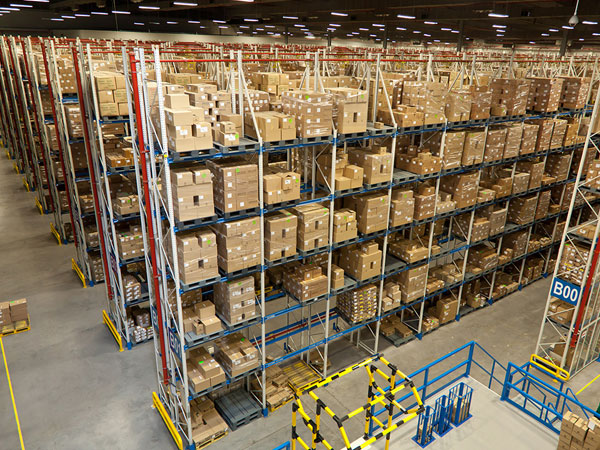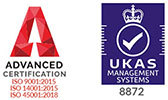Warehouse racking is an essential piece of equipment for any warehouse and distribution centre, regardless of the industry you work in. Their sole purpose is to safely store and stack high levels of stock that vary in shapes, sizes and weights. This makes warehouse racking an incredibly versatile storage solution that can be utilised by everyone.
As well as this, they’re designed to be accessed by even the most simple of warehouse equipment, such as forklifts, reach trucks, stackers and order pickers; each and every one of those being available from us here at Multy Lift. However, if you’re new to the warehousing game or if you’re simply replacing your warehouse racking for the first time, here’s everything you can expect when it comes to warehouse racking installation.
What are the warehouse racking components?
If you’re a seasoned warehouse owner, you will know the key elements, parts and components of standard warehouse racking. This is the case even more so if you have been assigned the task of inspecting the racking, ensuring their security and rigidity every step of the way. However, if you’re a novice when it comes to warehousing and warehouse storage, then we’ll take you through some of the key warehouse racking components. The warehouse racking components you need to be aware of include the following:
- Beam – a weight-bearing beam that lies horizontally and is used to connect one vertical pillar to another
- Frame protector – as the name would suggest, this projects the structure of your pallet racking
- Upright protector – this acts to decrease the impact experienced by any collisions with the warehouse racking
- Corner protector – something that is connected to any and all upright sides with the aim of preventing and protecting the racking from collisions
- Pallet support – this is the component that holds the pallets in a safe and sturdy position once put in place
- Footplate – this ensures that the warehouse racking is fixed safely and securely to a concrete slab or base
- Mesh decks – this is placed over the beams in order to produce a shelf, but it can be topped with particle board shelves to ensure stable storage
Planning for warehouse racking installation
Warehouse racking installation might sound like something that is simple and straightforward enough, but where that is correct when it comes down to the actual fitting of the racking, you will still need to get planning permission from your Local Authority before proceeding with warehouse racking.
This is because Building Regulations need to be adhered to in order to ensure the safety of yourself, your workers, your visitors, your premises and your stock. You will need to seek planning permission for any type of warehouse racking installation project, but it’s especially important if you’re looking at multi-tier racking systems or if the racking system supports a floor. This is also the case if the racking is supporting any walkways or even a staircase.
If you want to install a mezzanine floor, then, usually, planning permission isn’t required, but it’s always best to check with your Local Authority before having any work carried out, just for additional peace of mind. However, with a mezzanine floor, there will be some cases where planning permission will be needed and where Building Regulations are required to be adhered to, such as:
- If there are existing restrictions to your floor space
- If the mezzanine floor is over 200m² and to be used as office space
- If the warehouse needs external alterations to be able to accommodate a mezzanine floor
What are the warehouse racking installation guidelines in the UK?
You might think that we’ve already touched on some of the rules of warehouse racking installation, and you’d be correct, but there are, however, some other guidelines that need to be followed in conjunction with making sure you have planning permission and are following Building Regulations closely. In addition to all of that, the guidelines you need to be aware of when it comes to warehouse racking include the following:
- Uprights – these need to be secured to the floor in a way which has been specified by the manufacturer
- Levelling plates – levelling plates need to be used on ground that is uneven following the FEM/SEMA design codes and tolerances
- Frames – these need to be assembled in accordance with the manufacturers’ instructions, regardless of whether they’re upright, base plates, brace components or joining splices. In cases of a double rack, the adjacent frames need to be connected securely using stabilising row spaces
- Beams – these need to be placed between the uprights of two frames and be fixed in place using beam safety locks, because they’re specifically designed to prevent the beam from dislodging in any circumstance
- Load notices – these need to be regularly spaced and fixed to the racking in visible positions. If you do not do this, your system is then deemed to be non-compliant
The checks to carry out on your warehouse racking
Before you can use the racking as you require, and before you take any machinery to it or load it up with any stock, you need to make sure that checks are carried out on the racking itself. Not only should these checks be conducted right after installation, but they also need to be made at the end and at the start of each day. This ensures that any faults, damages or failures are noticed and fixed straightaway.
For example, you should check all of the fittings and fixtures to ensure they’re not loose or coming away from walls or floors. This prevents the racking from falling over and causing serious harm, or even death, to those onsite. Most warehouse owners will assign someone to carry out these checks as part of their overall job role. Some of the things you will need to check include the following:
- Diagonal braces
- Column guards
- Uprights
- Base plates
- Floor fixings
- Level plates
- Safety locks
- Supports
- Cradles
- Decking
- Shelf panels
- Frame spacers
- Nuts
- Bolts
- Guide rails
- Anti-collapse meshing
Multy Lift has over three decades of material handling experience and knowledge to draw upon. Over that time, we have supplied customers throughout the UK with first-class customer service and high-quality warehouse equipment, including warehouse racking and the machinery needed to access them, such as forklifts, reach trucks and order pickers, to name a few. If you would like further information about our new and used warehouse equipment, get in touch with a member of our expert team today – we’re always pleased to hear from you.







